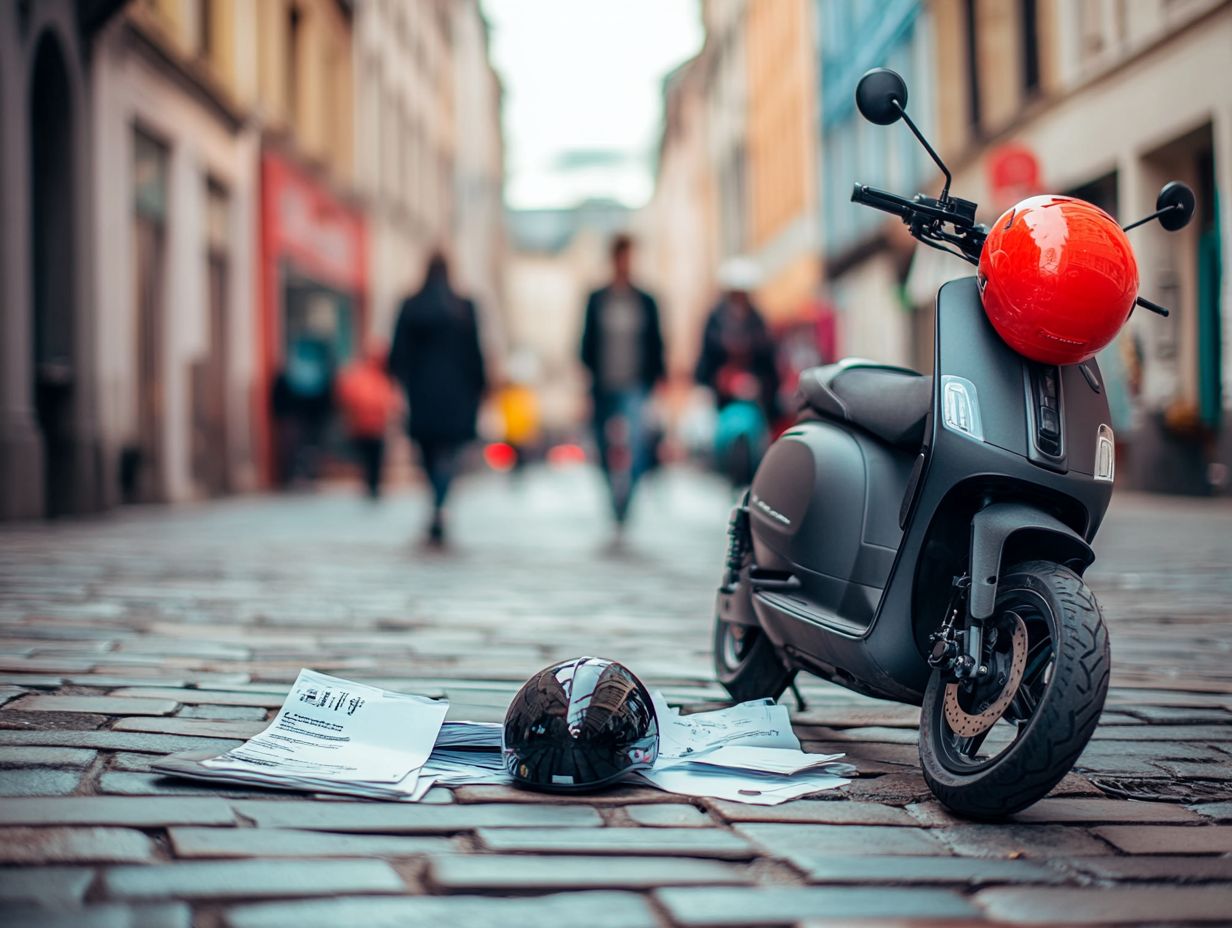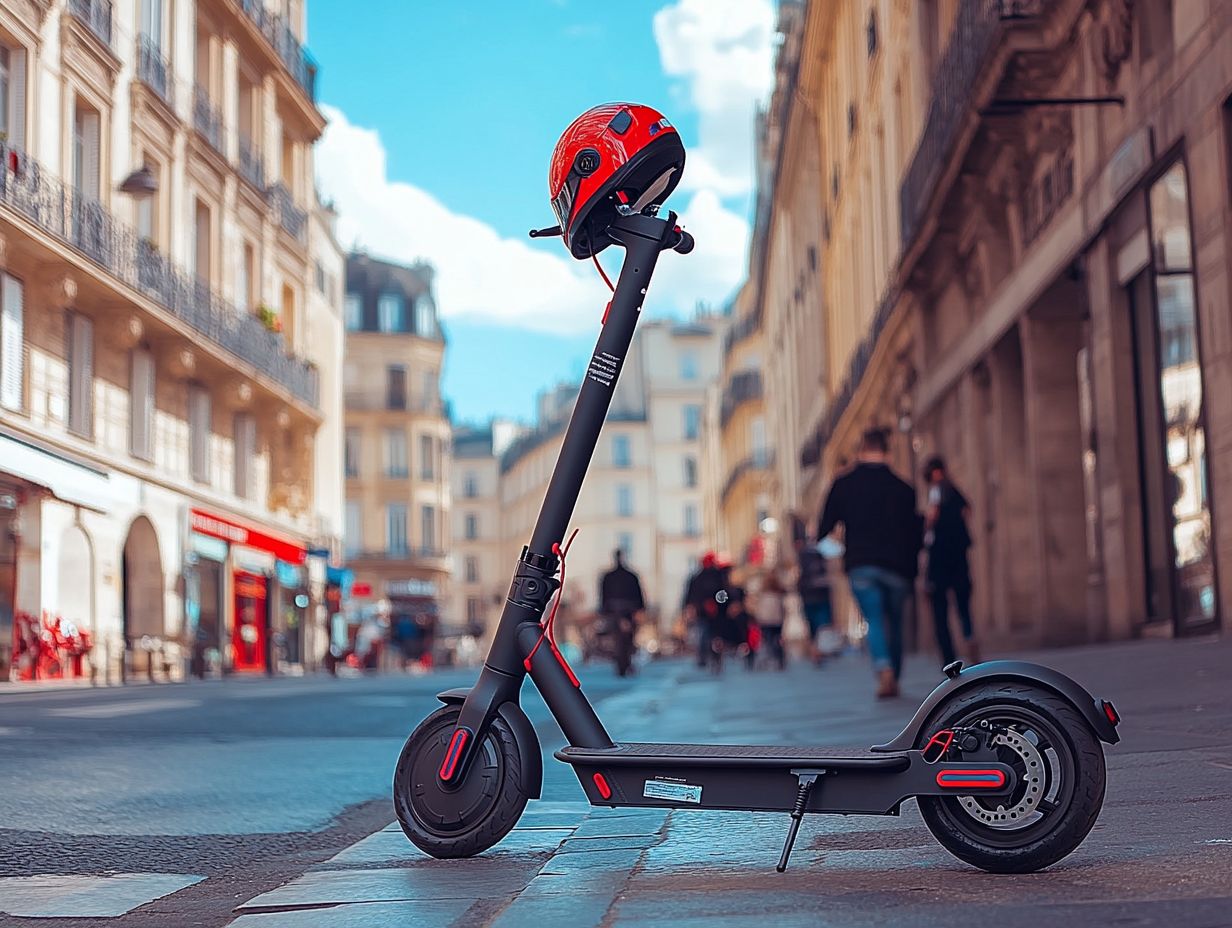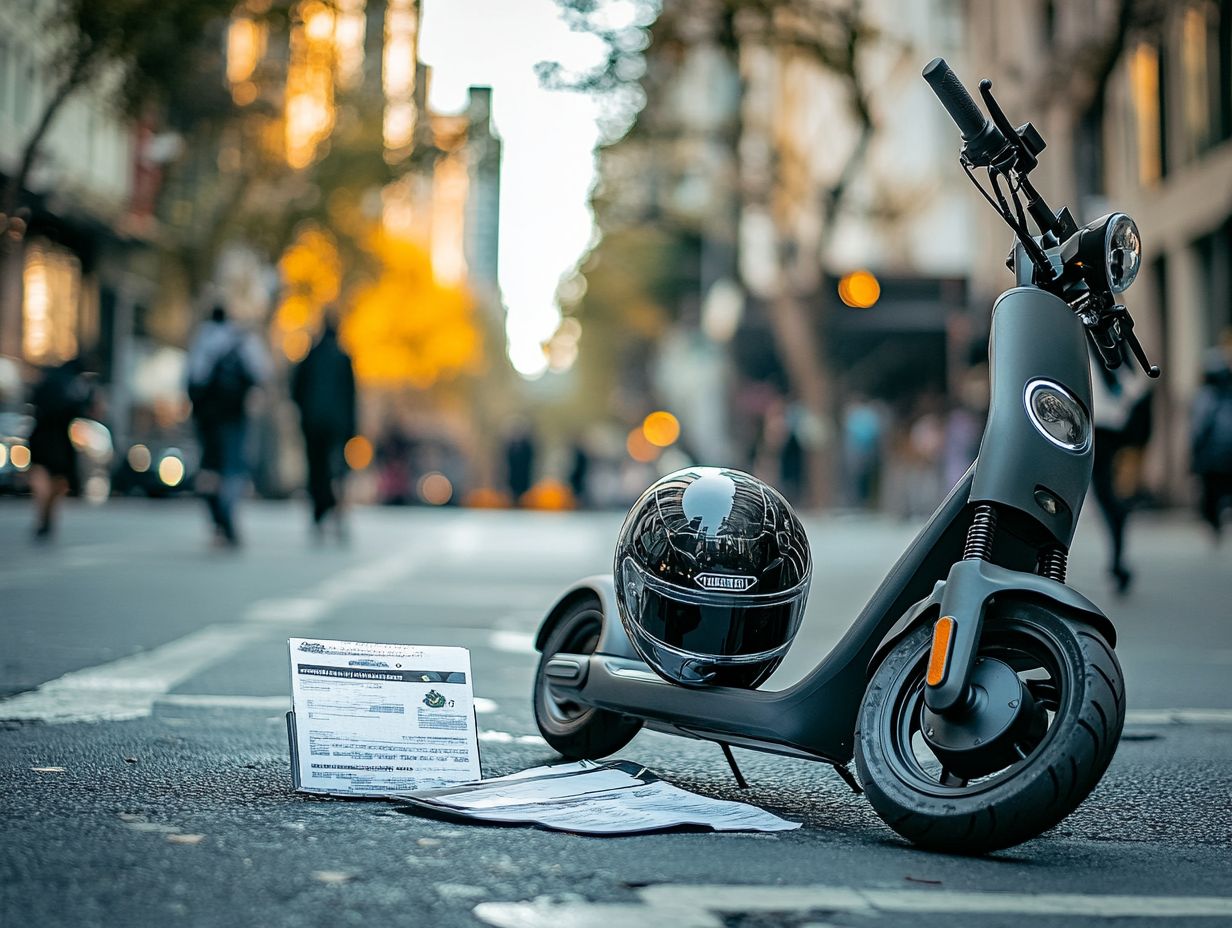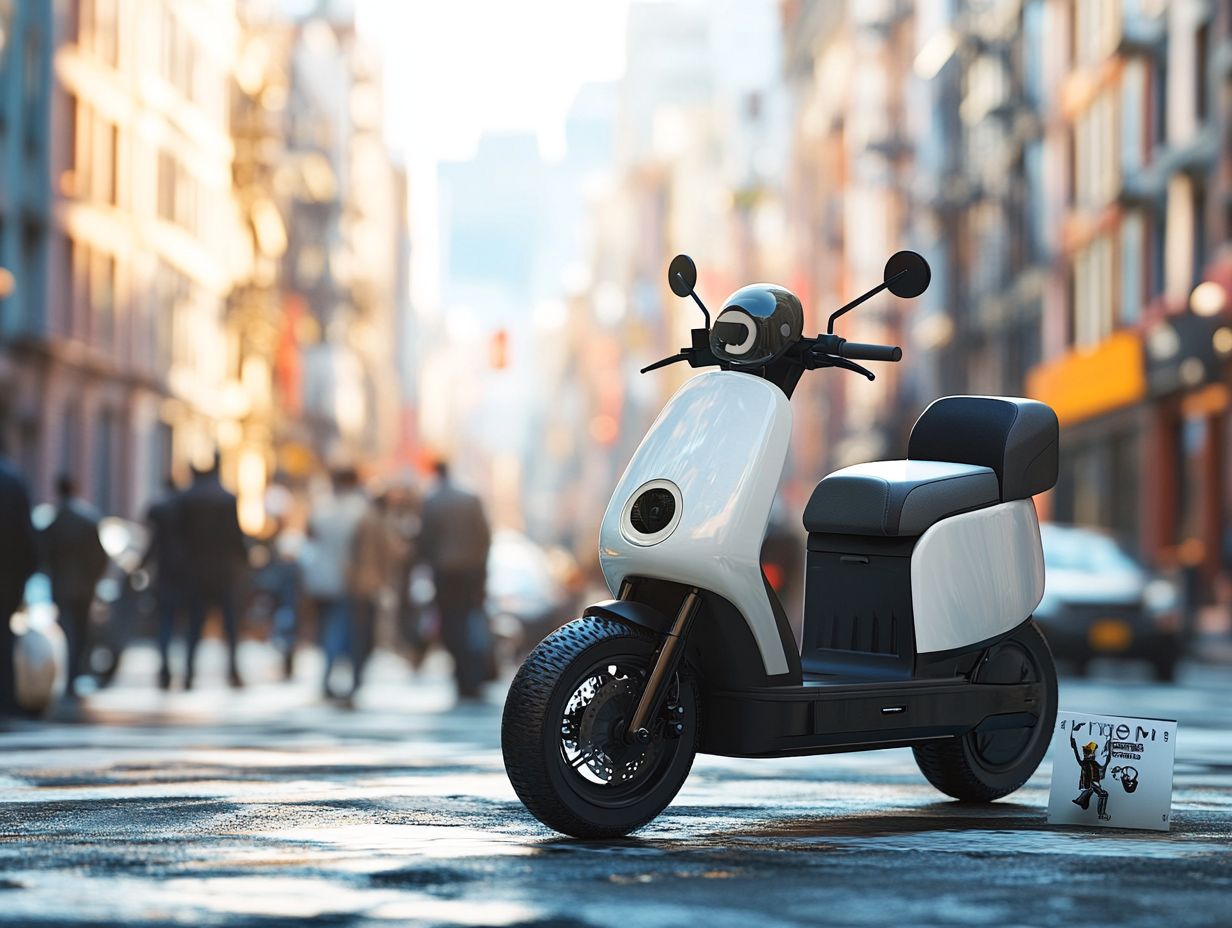What is Coverage for Electric Scooters?
Electric scooters are becoming a popular way to get around. It’s essential for riders to understand the intricacies of insurance coverage.
This guide is your key to understanding electric scooter coverage! It covers everything from liability insurance to collision and comprehensive options. Key factors that influence your coverage include the age and condition of your scooter, along with your location and how you use it.
This guide will show you how to get insurance and highlight the importance of having coverage to protect yourself on the road. Whether you re an experienced rider or just starting out, this information will empower you to navigate the essentials of scooter insurance, ensuring you ride with confidence.
Contents
- Key Takeaways:
- Understanding Electric Scooter Coverage
- Types of Insurance Coverage for Electric Scooters
- Understanding Collision and Comprehensive Coverage for E-Scooters
- Factors Affecting Coverage for Electric Scooters
- How to Get Coverage for Electric Scooters
- Importance of Coverage for Electric Scooters
- Frequently Asked Questions
- What is Coverage for Electric Scooters?
- What types of coverage are available for electric scooters?
- Do I need coverage for my electric scooter?
- What does liability coverage for electric scooters include?
- What is collision coverage for electric scooters?
- Is theft covered under coverage for electric scooters?
Key Takeaways:

- It protects you in case of accidents or damage to your scooter.
- Liability insurance covers costs if you injure someone or damage their property.
- Having insurance is crucial for both legal and financial protection.
Understanding Electric Scooter Coverage
Understanding electric scooter coverage is vital for riders, especially with the surge in usage and the variety of insurance policies available in regions like the USA and Canada. Additionally, knowing coverage for off-road vehicles can also provide valuable insights for those using similar modes of transportation.
As electric scooters gain popularity, the demand for robust e-scooter insurance grows. It safeguards riders against financial risks tied to accidents, medical expenses, and property damage.
Defining Coverage for Electric Scooters
Defining coverage for electric scooters requires a nuanced understanding of the different types of insurance, including coverage for vintage motorcycles, designed to protect riders from costs related to accidents and the risks that come with their usage.
This includes not just liability coverage, which addresses damages inflicted on third parties, but also comprehensive and collision insurance that protects against theft or damage to the scooter itself. Legal definitions vary by state, which influences how policies are structured a crucial consideration for riders.
Understanding accident liability helps you prepare for any potential legal repercussions and medical costs from incidents. By familiarizing yourself with these elements, you can make informed decisions about your insurance needs, enhancing your safety and peace of mind while navigating urban landscapes.
Types of Insurance Coverage for Electric Scooters
When considering insurance for electric scooters, you’ll encounter several types of coverage tailored to your needs: liability insurance, collision insurance, and comprehensive insurance.
Each of these options is crafted to safeguard you against various risks, from property damage to personal injury, ensuring you ride with confidence and peace of mind.
Liability Insurance
Liability insurance for e-scooters is crucial for you as a rider because it covers costs related to accidents, including damages or injuries to others. It’s also important to consider how uninsured motorist coverage fits into the picture.
This insurance not only shields you financially but also helps you meet the diverse legal requirements that vary from one region to another. In some areas, you may need to carry a minimum level of liability coverage, which could include compensation for medical expenses or property damage.
If you unintentionally collide with a pedestrian or another vehicle, this insurance becomes essential. It can save you from crippling out-of-pocket expenses and legal troubles. By understanding the specifics of your policy, you can navigate unforeseen incidents with greater confidence and peace of mind.
Understanding Collision and Comprehensive Coverage for E-Scooters

Collision and comprehensive coverage are essential types of e-scooter insurance that protect you from money problems stemming from accidents, vandalism, theft, and other unexpected events.
Collision coverage specifically addresses damages incurred during accidents involving other vehicles or obstacles. Comprehensive coverage offers a broader safety net by covering incidents like natural disasters, theft, or even damage caused by animals.
Picture yourself facing significant repair costs after colliding with a car. This is where collision coverage truly shines, ensuring you aren t left with hefty bills.
If your e-scooter gets stolen when parked, comprehensive coverage comes to the rescue, potentially allowing for quick reimbursement. Getting both types of insurance is crucial for your safety and peace of mind!
Factors Affecting Coverage for Electric Scooters
Several factors influence coverage for electric utility vehicles, including the age and condition of the scooter, along with the rider’s location and usage patterns. These elements can significantly shape insurance requirements and the amount you pay for insurance each month, guiding you toward the best coverage options tailored to your needs.
Age and Condition of Scooter
The age and condition of your electric scooter can greatly impact the level of insurance available to you as an e-scooter rider.
As your scooter ages, its value tends to decline, which can lead to lower premiums. For example, insuring a brand-new model might set you back several hundred dollars, while the cost for an older model could drop significantly due to its diminished value.
Insurance providers consider your scooter’s condition. A well-maintained vehicle presents less risk compared to one that shows signs of wear and tear.
A recent study reveals that around 30% of e-scooter claims are linked to accidents involving older models that lack modern safety features. This statistic highlights the critical role both age and condition play in determining your insurance options and coverage limitations.
Location and Usage
Location and usage patterns for e-scooter riders are essential factors that shape your insurance requirements. Urban areas often bring higher risks compared to suburban or rural settings.
In bustling cities, you face a host of unique challenges heavy traffic, distracted pedestrians, and a myriad of obstacles that can all lead to a greater likelihood of accidents. Because of these environmental factors, insurers tend to classify urban riding as higher risk.
If you re riding in rural areas, you re generally navigating less congested roads, which can lower your chances of collisions and potentially result in more favorable premiums.
How often you hop on your e-scooter also plays a crucial role in assessing your risk profile. Those who ride daily may pose different liabilities compared to occasional riders, regardless of their location.
How to Get Coverage for Electric Scooters
Securing coverage for electric scooters involves navigating a range of available options and selecting the right e-scooter insurance policy from reputable providers that cater to your specific needs.
It’s essential to assess your requirements carefully to ensure you find the perfect fit for your lifestyle and riding habits.
Ready to protect your e-scooter? Start comparing insurance policies today!
Options for Obtaining Insurance

You have several options for obtaining insurance for your e-scooter, including direct purchases from insurance providers, online platforms, and bundled policies.
Reach out to local insurance agents who focus on personal vehicles. They can give you tailored advice based on your needs.
Online comparison websites make it easy to gather multiple quotes, allowing you to evaluate various policies side by side.
It s essential to pay attention to coverage limits, deductibles (the amount you must pay out of pocket before insurance kicks in), and specific exclusions to find the best fit for you.
By exploring these channels, you can secure the coverage you need while potentially saving money through discounts and promotions.
Importance of Coverage for Electric Scooters
Coverage for electric scooters is crucial. It protects riders from risks like accidents, medical costs, and unexpected financial troubles, much like understanding coverage for snowmobiles helps ensure safety and peace of mind.
Risks of Riding Without Insurance
Riding an electric scooter without insurance places you at considerable risk. You expose yourself to potential accident liability and medical expenses.
An accident can lead to huge bills, affecting not only you but also others involved. Lacking adequate coverage means even minor mishaps can escalate into overwhelming debts or legal battles.
This underscores the essential need for insurance; it s not simply a precaution but a crucial safety net. Without it, you may find yourself vulnerable to unforeseen liabilities that could upend your entire life.
Frequently Asked Questions
What is Coverage for Electric Scooters?
Coverage protects riders from accidents, damages, or theft while using their electric scooters.
What types of coverage are available for electric scooters?

There are various types of coverage available for electric scooters, including liability coverage, collision coverage, comprehensive coverage, and coverage for motorized scooters, as well as uninsured/underinsured motorist coverage.
Do I need coverage for my electric scooter?
It is highly recommended to have coverage for your electric scooter, as accidents and damages can occur at any time. Some states may also require riders to have a minimum level of coverage.
What does liability coverage for electric scooters include?
Liability coverage for electric scooters typically includes bodily injury and property damage liability, which covers the costs of injuries or damages caused to others while operating the scooter.
What is collision coverage for electric scooters?
Collision coverage for electric scooters covers the costs of damages to your scooter if you collide with another object, such as a vehicle, building, or barrier. It’s also important to understand coverage for golf carts to ensure comprehensive protection for your vehicles.
Is theft covered under coverage for electric scooters?
Yes, theft is typically included in comprehensive coverage for electric scooters, protecting against losses due to theft, vandalism, or natural disasters.





